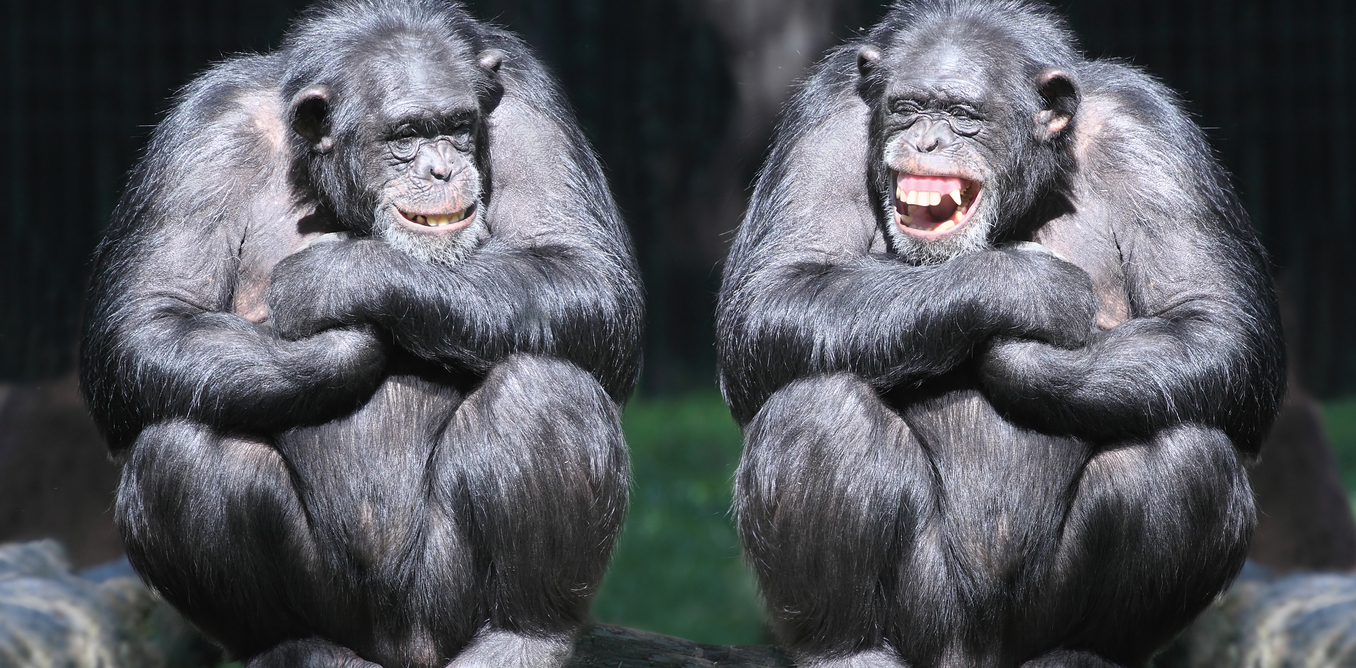
Why Did Laughter Evolve?
Laughing is an ancient, universal communication tool that has been in existence for at least ten million years. It originated during play within primate groups: today chimpanzees, gorillas, orangutans and bonobos all make laughter sounds when tickled.
Laughter evolved before speech as a way of communicating and strengthening bonds within families of primates. As the sounds developed further, they became a way of ‘grooming at a distance’ and enhanced the cohesiveness of the community.
Gradually, laughter sounds developed into longer breaths as bipedalism (walking upright) allowed our primate ancestors to stand on two feet, thus freeing the thoracic cavity and enabling them to enjoy greater breath control and acoustic range.
Humans laugh on the outward breath, compared to apes and chimps who laugh with shorter ‘panting’ breaths, both on the inhale and the exhale. We have developed this elongated ‘ha, ha, ha’ acoustic exhalation pattern to our laughter structure (unique in the animal kingdom) due to greater freedom of movement of our larynx, thorax and diaphragm.
Why did early humans laugh?
Another reason our laughter evolved was associated with the relief of tension, worry, anxiety or threat. After a near miss with a dangerous animal our ancestors may have laughed to help release trapped tension in their muscles and skeletal structure.
Primitive laughter also originated in periods of satiation and relaxation, signalling a sense of wellbeing within the group and lengthening periods of play, enjoyment and community.
Laughter is a highly contagious activity and our brains respond positively to the sound of laughter, even if we don’t actually participate.
Smiling evolved from a need to show others that we were not dangerous: flashing our molars was a way of demonstrating submissiveness and a desire to show allegiance.
The act of laughing pre-dates humour, which developed much later alongside the evolution of a larger social brain and spoken language. Our ancestors gradually learnt how to punctuate speech sounds with laughter so it became the complex and effective communication tool we use today. Laughter stimulated by jokes became a positive acknowledgement of verbal play amongst humans











